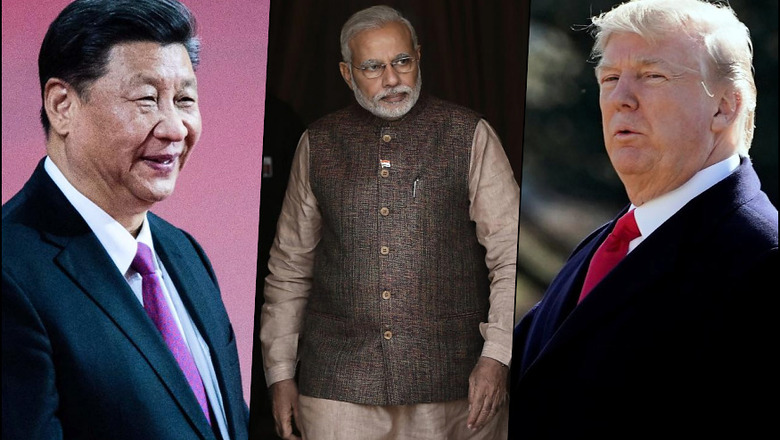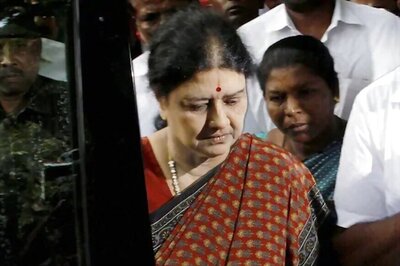
views
In Part 1 of a two-part series for News18.com, I had looked at India’s geostrategic options in light of the intensified rivalry between the United States (US) and China. I concluded that India's geography and China's hegemonic ambitions in Asia would seriously hinder India's attempts to retain strategic autonomy. The obvious answer is for India to itself acquire so much power that it is not forced to swing one way or the other. However, the question that faces us is whether such power acquisition is possible in the near future.
India undoubtedly has the potential to become a great power. Kenneth Waltz, in his article The Emerging Structure of International Politics classifies five characteristics of great powers — the size of population and territory, resource endowment, economic capability, military strength, political stability, and competence. In all these areas, India enjoys significant potential, but there is still a considerable distance to be traversed before potential can be translated into reality.
In recent years, India's economy has slowed down, and the pandemic has exposed serious shortcomings in our ability to provide social security to ordinary citizens. The military is large in size but constrained by shrinking budgets and low levels of military technology. Over a period of time, we could overcome these shortcomings through structural reforms, effective policies, and strengthening our institutions, but this will be dependent on a peaceful geopolitical environment in our neighbourhood. Unfortunately, this does not appear to be happening.
The Chinese sword is out of the sheath, and while many Asian countries are feeling its impact, the sharpest cut has been inflicted on the Line of Actual Control separating India and China in Ladakh. India's response has also exposed the limits of Indian options when faced with Chinese military aggression. While the crisis is yet to play out completely, an unsettled border will remain a pressure point in China’s attempts to coerce India.
It is also a reality that the economic and military power differential between India and China is only set to increase in the future. It is uncertain how the trade war and technology decoupling with the US, the shift of supply chains from China, and rising China-EU tensions would impact the Chinese economy. What is certain is India is not closing the gap anytime in the future. To reach the 2019 GDP figures of China that stood at $14 trillion will take India an optimistic 15 years.
Chinese military reforms and modernization have been progressing at an impressive pace. The ambitious 2015 reforms established joint theatre commands, upgraded the PLA Rocket Force to the status of a full service, created the Strategic Support Force to combine space and cyber capabilities, and established a Joint Logistics Support Force. These reforms are backed up by a strong defence-industrial base that is self-sufficient in producing weapon systems that compare favourably with the best in the world.
PLA’s modernization has been supported by a defence budget that grew by an average of 10 percent in a fifteen-year period up to 2016. Despite the pandemic's economic impact, the PLA budget, announced in May, saw a 6.6 percent increase to $178 billion. This is almost three times the size of the Indian defence budget.
According to a European Commission report World Military Expenditure and Weapons Trade, by 2030, China’s military spending could rise to $736 billion, with India at $213 billion.
The power differential between India and China could be managed as long as we kept the India-China strategic rivalry from turning overtly hostile. This is no longer the case, and China’s quest for great power status will include the establishment of hegemony in Asia and cutting India down to size.
The Foreign Minister’s recent comments that “we are moving towards a multi-polar world” where “much more room has opened up for middle powers” may be theoretically correct, but as China’s direct neighbour, India has limited options to resist Chinese hegemony independently. Even a combination of “middle powers” in Asia is not strong enough to counter China.
It had been felt that China would continue to bide its time and rise peacefully till it had closed the relative economic and military gap with the US. It is unclear as to why Xi Jinping has chosen this moment to unleash an aggressive behaviour, when there is still a significant power differential between these two countries. However, this has opened up an opportunity to contain China before it becomes too powerful.
India should enter into an open alliance with the US aimed at checking China’s hegemonic ambitions. The US views China as a threat to its global supremacy and appears determined to thwart or delay China’s emergence as a peer competitor. Despite all its moralizing, the US has always taken a realistic view of geopolitics and understands that power is the key to dominating the international system.
In countering China’s ambitions, the US faces the difficulties of traversing the Pacific Ocean and therefore needs Asian partners like India. For India, US support could be crucial to prevent us from reaching a position where we are forced to deal with events on China’s terms. Thus, there is mutual benefit for both India and the US to align more closely.
The US push to create an "Economic Prosperity Network" of trusted partners aims to move supply chains out of China and India is well placed to take advantage of this. Similarly, the US-China technology decoupling would, at some stage, force India to make a choice, and it is obvious that we cannot rely on Chinese technology due to national security considerations.
There is a feeling that an alliance will hold us hostage to US policies and inhibit our autonomous choices. While there will be some give and take, the fears of subservience in policy decisions are overblown. The establishment of the NATO and the US-Japan security treaty was no hindrance to the defeated nations of World War 2 becoming the second and third-largest economies of the world. It would also be a fallacy to assume that Germany and Japan forsake their national interests and blindly follow American policies.
International politics is also not a zero-sum game, and an alliance with the US does not mean abandoning all ties with China or a reset in relations with countries like Russia. Germany, the United Kingdom, and France, three major NATO partners, had total trade of $385 billion with China in 2019. Even as the US-China cold war intensifies, NATO has not yet taken any clear side.
Will a move into an alliance with the US result in greater Chinese aggression along the borders? That is a real possibility, and the Indian military will have to be ready for this contingency. However, we are better prepared to deal with the PLA now than a decade later when China has grown more powerful.
It is not going to be possible for India to sit on the sidelines of the ongoing US-China cold war and hope to extract advantages from both sides. To rise to our power potential, we need markets, technology, and, most of all, a secure environment. In all these areas, the US is obviously a better partner.
In Shakespeare’s Julius Caesar, Brutus says, “There is a tide in the affairs of men. Which, taken at the flood, leads on to fortune". India is at a moment when we have to make choices that best serve our national interests.




















Comments
0 comment